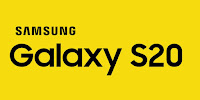Fast Charger Survival Guide
Shopping for fast chargers can be confusing and frustrating. Like, which one does my device need to fast charge it.
Well… Good news for you. I've broken down what you'll need to look for with fast charging.
WARNING: It's about to get technical up in here.
Fast Charging Basics
The output of a charge is measured in amperage and voltage. Amperage is the amount of electricity flowing from the battery to the connected device, while voltage is the strength of the electric current. Multiplying volts by amps gives you wattage, the measure of total power.
To make a device charge faster, most manufacturers either boost the amperage or vary the voltage in order to increase the amount of potential energy.
For fast charging, the voltage gets increased up to 5V, 9V, 12V, and beyond, or increases amperage to 3A and above.
You need a phone or other device with a charging circuit capable of using one of the fast charging standards, and an adapter and cable enabled for that same standard.
Type of Fast Charging
Apple Fast Charging
Starting with the iPhone 8, all of Apple's phones support fast charging. Unless you own an iPhone 11 Pro or 11 Pro Max, however, you're probably using one of Apple's slow 5W adapters to charge your phone.
iPhone 11 Pro
Apple uses USB Power Delivery for fast charging, and claims you’ll see a 50 percent increase in battery life in just 30 minutes. In order to get these speeds, however, you need to use at least an 18W adapter with a USB-C-to-Lightning cable. A more powerful adapter won’t harm your phone, but it’ll probably not help much.
MediaTek Pump Express
Certain MediaTek-powered phones use the company's Pump Express standard, which comes in different versions on different devices.
Pump Express 2.0+ is primarily for MediaTek’s low-end chipsets, and works with micro USB and USB-C charging ports. Charging maxes out at 15W by using 5V to 20V variable voltage in conjunction with 3A or 4.5A of current.
Pump Express 3.0 and Pump Express 4.0 are largely the same. Both rely on 5A of current and use USB Power Delivery 3.0. The difference is that Pump Express 4.0 also supports its own proprietary wireless charging technology, as well at Qi wireless charging at 5W.
MediaTek claims Pump Express 2.0+ should charge a depleted battery to 70 percent within 30 minutes, while Pump Express 3.0 and 4.0 should cut that time in half. On average, I saw closer to a 55 percent charge over 15 minutes.
Motorola Rapid Charging and TurboPower
Motorola uses two different proprietary fast charging standards, Rapid Charging and TurboPower. For the most part, the less expensive Moto E and and Moto G series phones use Rapid Charging, which offers 10W charging via micro USB or USB-C. It offers a slight boost over basic 5W charging, but don't expect to see super-fast charging times.
Motorola's midrange and phones uses a different technology called TurboPower. TurboPower is a little confusing, and you'll probably want to check the company's site to find the best charger for your phone, but basically there are 15W and 18W TurboPower standards. To simplify things a bit, all Motorola smartphones with TurboPower also support Qualcomm Quick Charge 3.0.
OnePlus Fast Charging
OnePlus Dash Charge and Warp Charge, bump up amperage to 5V/4A to achieve an output of 20W. On a phone like the OnePlus 5T, you can charge up to 60 percent in 30 minutes.
Newer models like the OnePlus 8 Pro support 30W wired and wireless charging thanks to Warp Charge. Wired charging is delivered via a 5V/6A adapter and proprietary USB-C cable. Delivering 30W wireless charging speeds is more of a challenge, as it would create an extraordinary amount of heat using the standard 5V/6A formula. Instead, OnePlus delivers 20V at just 1.5A, since voltage creates far less heat.
OnePlus also uses charge pumps in an innovative way to make charging safer and more efficient.
Qualcomm Quick Charge
The most common fast charging standard is Qualcomm's Quick Charge because of the widespread nature of the company's chipsets. Many of the phones that support newer Quick Charge standards aren't sold in the US.
Quick Charge 3.0 is one of the most common fast charging protocols used in midra, and Quick Charge 3+ brings similar speeds to midrange phones with some Qualcomm Snapdragon 700-series chipsets. Quick Charge 4+ is the the current global gold standard for devices that don’t use proprietary fast charging technologies. Each standard is backward compatible with the previous one, so older cables and adapters will still work.
Galaxy S20 Ultra
Quick Charge 3.0 dynamically boosts voltage from 3.2V to 20V, though peak power for both standards is 18W. That means, theoretically, phones with a 3,500mAh to 4,500mAh capacity can gain about 80 percent charge in just 35 minutes when the battery is depleted. Quick Charge 3+ brings similar charging speeds to less-expensive chipsets.
Quick Charge 4+ narrows the voltage range while pumping up the amperage. It offers 5V at between 4.7A to 5.6A, or 9V at 3A. Quick Charge 4+ devices use USB-C ports and are compliant with USB Power Delivery. They also have a second power management chip, allowing up to 28W of power without overheating. The LG V60 ThinQ 5G is one of a handful of US phones that support Quick Charge 4+, and in testing, we were able to get a 50 percent charge on a depleted battery in about 18 minutes.
Qualcomm Quick Charge 5 standard supports fast charging at 100W and can completely recharge a 4,500mAh battery in just 15 minutes. It will initially be supported on Snapdragon 865 chipsets and upcoming premium Qualcomm processors.
Samsung Fast Charging
Samsung's Adaptive Fast Charging works in a similar manner to Qualcomm's Quick Charge by bumping up voltage and/or amperage.
Galaxy Charging
With Samsung’s optional 10V/4.5W adapter, the Galaxy S20 Ultra and the Note 10+ can theoretically charge at 45W. Most of Samsung's current-generation devices support Adaptive Fast Charging up to 25W with the adapter in the box. It’s important to note that while some Samsung phones support older versions of Qualcomm Quick Charge, you’ll see much faster speeds using the adapter that comes with the phone or a Samsung-certified adapter.
What Is Wireless Fast Charging?
Wireless charging is convenient, but it can be slow. Most wireless chargers that lack fans or cooling systems are limited to charging speeds of just 5V/1A. But various companies now offer fast wireless charging pads that come with built-in fans to dissipate heat, allowing you to charge at speeds nearly on par with a cable.
Voltage and amperage depend on the charging pad in question. You'll want to make sure that your phone and your wireless charging pad support the same fast charging standard. Also keep in mind you'll need a wall adapter plugged into the pad that supports fast charging as well.













